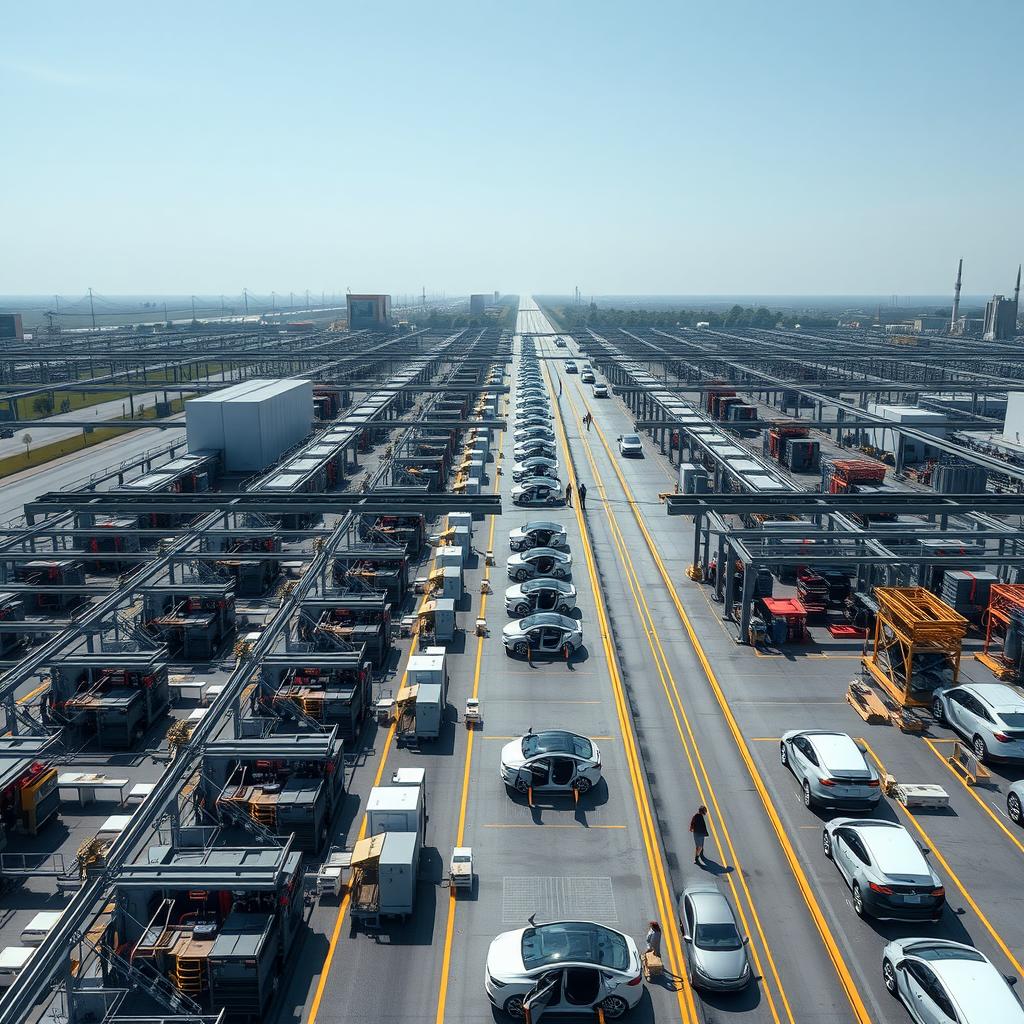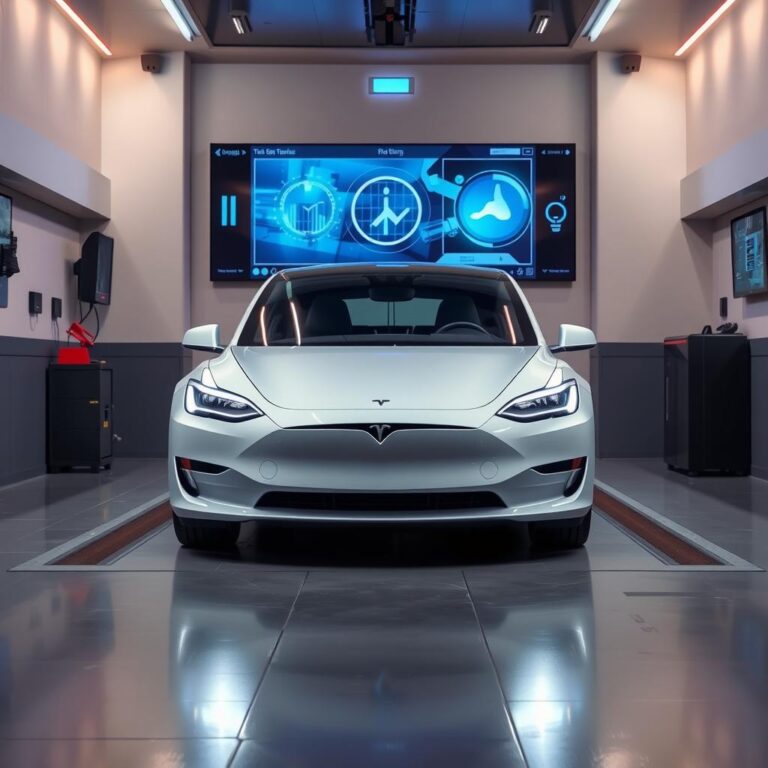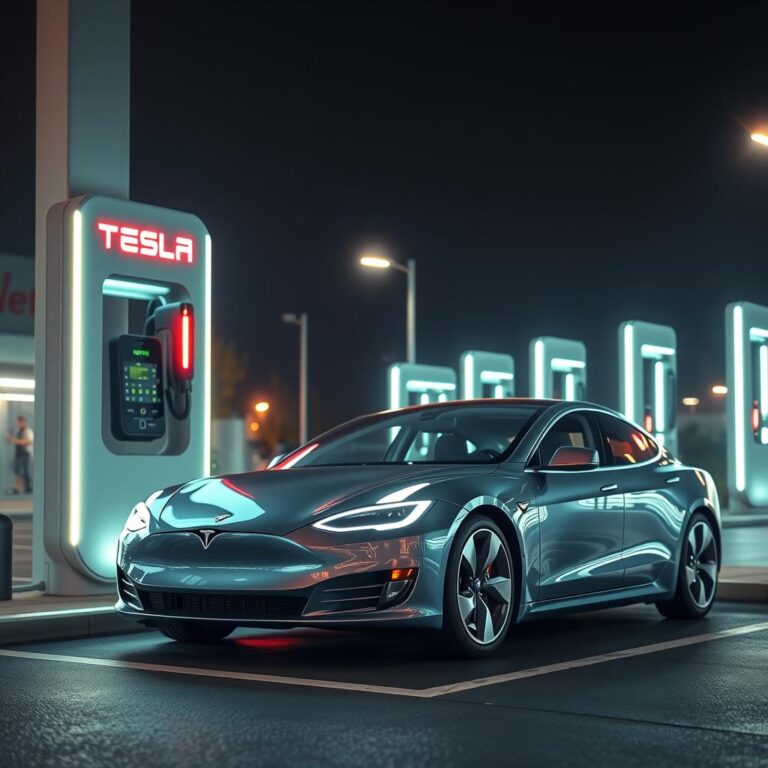Can A Tesla Car Explode?
Can a Tesla car explode? This question comes up often due to viral news stories and concerns about electric vehicle (EV) safety.
With Tesla’s lithium-ion battery technology, many wonder if Teslas are at risk of exploding like traditional gas-powered cars.
The Short Answer: Extremely Rare, But Possible
A Tesla can technically catch fire or explode, but it’s much less likely than a gasoline car. While there have been incidents of Tesla battery fires, they are rare and usually occur under extreme conditions.
What Causes Cars to Explode?
Car explosions typically happen due to one of the following:
- Gasoline combustion: Traditional gas cars carry flammable fuel that can ignite in crashes.
- Battery fires: EVs like Tesla use lithium-ion batteries, which can overheat under certain conditions.
- Electrical malfunctions: Short circuits can cause fires in both gas and electric cars.
- External damage: Severe crashes can cause structural failures leading to fire or explosions.
Are Tesla Cars More Likely to Explode Than Gas Cars?
No, Teslas are actually less likely to catch fire or explode compared to gasoline vehicles.
According to Tesla’s data:
- Gas-powered cars catch fire every 19 million miles driven.
- Tesla vehicles catch fire every 205 million miles driven.
This means a Tesla is 10 times less likely to experience a fire than a gas-powered car.
How Can a Tesla Catch Fire or Explode?
While rare, there are a few ways a Tesla battery fire can occur:
1. Thermal Runaway
- Tesla’s batteries contain lithium-ion cells.
- If one cell overheats, it can trigger a chain reaction called thermal runaway.
- This can cause smoke, fire, or in extreme cases, an explosion.
2. High-Speed Collisions
- In extreme crashes, battery packs can be punctured.
- A damaged battery can short-circuit and catch fire.
3. Charging Malfunctions
- Overcharging or using faulty chargers can cause battery overheating.
- Tesla’s built-in safety features help prevent this.
4. External Damage
- Floods, debris, or impact from objects can damage the battery.
- This can lead to internal short circuits.
How Safe Are Tesla Batteries?
Tesla has designed its battery packs with multiple layers of protection:
1. Battery Cooling System
- Tesla uses a liquid cooling system to prevent overheating.
- This keeps battery temperatures stable even under heavy use.
2. Fireproof Battery Enclosures
- The battery is enclosed in a fire-resistant casing.
- In case of damage, the design slows down the spread of fire.
3. Automatic Battery Shutdown
- In severe crashes, Tesla’s system automatically cuts power to the battery.
- This reduces the risk of sparks or electrical fires.
Has a Tesla Ever Exploded?
Yes, but incidents are extremely rare.
1. Shanghai Parking Garage Fire (2019)
- A parked Tesla Model S caught fire and exploded in China.
- Investigators found a battery issue, but no widespread defect.
2. Texas Crash Fire (2021)
- A Tesla crashed at high speed and caught fire.
- The intense fire was due to battery damage from impact.
These incidents are rare compared to the thousands of gas car fires that happen each year.
How to Prevent a Tesla Battery Fire
To minimize risk, follow these safety tips:
1. Use Official Tesla Chargers
- Always charge with Tesla-approved charging stations.
- Cheap or unofficial chargers can cause battery issues.
2. Avoid Extreme Heat
- Don’t park your Tesla in direct sunlight for long hours.
- Extreme heat can stress the battery over time.
3. Follow Charging Best Practices
- Avoid charging to 100% daily—keep it between 20-80% for longevity.
- Let the battery cool after long drives before charging.
4. Monitor Battery Health
- If you see alerts about battery overheating, address them immediately.
- Service your Tesla regularly to check for any issues.
FAQs About Tesla Explosions and Fires
Can a Tesla battery explode?
It’s extremely rare, but under extreme conditions like a high-speed crash or battery damage, a fire or explosion could occur.
Are Teslas more likely to catch fire than gas cars?
No, Tesla vehicles are about 10 times less likely to catch fire than gasoline cars.
What happens if a Tesla battery overheats?
Tesla’s cooling system prevents overheating, but if the battery reaches dangerous temperatures, the system will limit performance or shut down.
How do you put out a Tesla fire?
Tesla fires require large amounts of water to cool the battery. Firefighters are trained to handle EV fires differently than gas car fires.
Can charging a Tesla cause a fire?
Not under normal conditions. Tesla has built-in safety features to prevent overcharging and overheating.
The Verdict: Can a Tesla Car Explode?
Yes, but it’s highly unlikely.
Tesla’s battery design, cooling system, and safety features make explosions extremely rare. Compared to gasoline cars, Teslas have a lower risk of catching fire. However, like any vehicle, extreme crashes or battery damage can still pose a risk.

How Tesla Handles Battery Safety
Tesla takes battery safety seriously and has implemented multiple safety measures to prevent fires or explosions.
1. Over-the-Air (OTA) Software Updates
- Tesla regularly updates software to improve battery management and prevent overheating.
- If a safety issue is detected, Tesla can roll out immediate fixes remotely.
2. Battery Compartment Design
- The battery pack is housed in a strong, protective casing beneath the car.
- It’s designed to absorb impacts in case of a crash.
3. Built-In Firewalls
- Each battery module is separated with fire-resistant barriers.
- This prevents fire from spreading between cells in rare overheating cases.
How Tesla Fires Are Handled
In the rare event of a Tesla fire, specialized firefighting techniques are required.
1. Firefighters Use Massive Water Cooling
- Unlike gasoline fires, Tesla battery fires need a constant flow of water to cool the cells.
- Firefighters may use thousands of gallons of water to contain a battery fire.
2. Battery Fires Can Reignite
- Due to thermal runaway, a Tesla fire can reignite even after being put out.
- Damaged batteries may continue heating up and need to be submerged in water.
3. Special Training for EV Fires
- Many fire departments now have training to handle Tesla fires properly.
- Using foam or chemical extinguishers doesn’t work on lithium-ion fires.
What Happens If a Tesla Crashes?
Teslas are among the safest vehicles in crash tests. However, battery damage from extreme impacts can pose risks.
After a Crash, Tesla’s Safety Features Include:
- Automatic Power Cut: The battery disconnects to prevent sparks.
- Airbags Deploy: Protects occupants in high-impact collisions.
- Fire-Resistant Materials: Battery casings slow down heat spread.
Most Tesla crashes do not result in fires, but like any car, extreme impacts can cause battery damage.
How Tesla Compares to Other EVs in Fire Risk
Compared to other electric vehicles (EVs), Tesla has one of the safest battery designs.
| EV Model | Battery Fire Rate | Safety Features |
|---|---|---|
| Tesla Model 3 | Very Low | Battery cooling, fireproof barriers, auto power cut |
| Chevy Bolt | Moderate (battery recalls) | Battery recalls issued for safety updates |
| Nissan Leaf | Low | Passive cooling, lower energy density |
Tesla’s liquid-cooled battery packs give it a safety advantage over some other EVs.
Does Tesla’s Autopilot Reduce Fire Risks?
Autopilot and Full Self-Driving (FSD) may indirectly reduce the risk of accidents leading to fires.
How Tesla’s Autopilot Helps Prevent Crashes:
- Collision Avoidance: Autopilot can detect and avoid obstacles.
- Lane-Keeping Assistance: Helps prevent sudden swerving.
- Emergency Braking: Can stop the car before a crash occurs.
While no system is perfect, Tesla’s driver-assist features help reduce severe accidents that could lead to fires.
Future Battery Safety Innovations
Tesla continues to improve battery safety through new technology.
1. Structural Battery Packs
- Newer Tesla models (like the Model Y) use a structural battery pack.
- Improves crash resistance and reduces weight.
2. Next-Generation Battery Chemistry
- Tesla is developing lithium-iron-phosphate (LFP) batteries.
- LFP batteries are safer and less likely to overheat.
3. Faster Emergency Response Features
- Future Teslas may include better fire suppression systems.
- Software updates will continue improving battery monitoring.
FAQs About Tesla Explosions and Fires
Can a Tesla battery explode?
It’s extremely rare, but under extreme conditions like a high-speed crash or battery damage, a fire or explosion could occur.
Are Teslas more likely to catch fire than gas cars?
No, Tesla vehicles are about 10 times less likely to catch fire than gasoline cars.
What happens if a Tesla battery overheats?
Tesla’s cooling system prevents overheating, but if the battery reaches dangerous temperatures, the system will limit performance or shut down.
How do you put out a Tesla fire?
Tesla fires require large amounts of water to cool the battery. Firefighters are trained to handle EV fires differently than gas car fires.
Can charging a Tesla cause a fire?
Not under normal conditions. Tesla has built-in safety features to prevent overcharging and overheating.
The Verdict: Can a Tesla Car Explode?
Yes, but it’s highly unlikely.
Tesla’s battery design, cooling system, and safety features make explosions extremely rare. Compared to gasoline cars, Teslas have a lower risk of catching fire. However, like any vehicle, extreme crashes or battery damage can still pose a risk.


